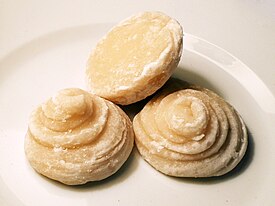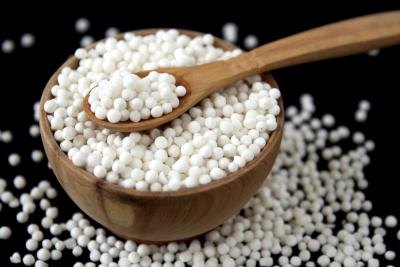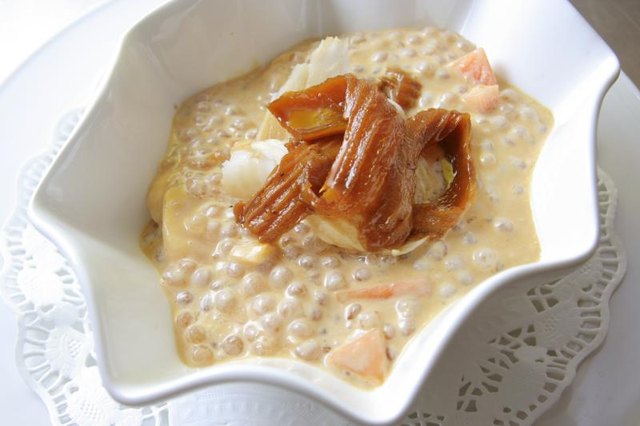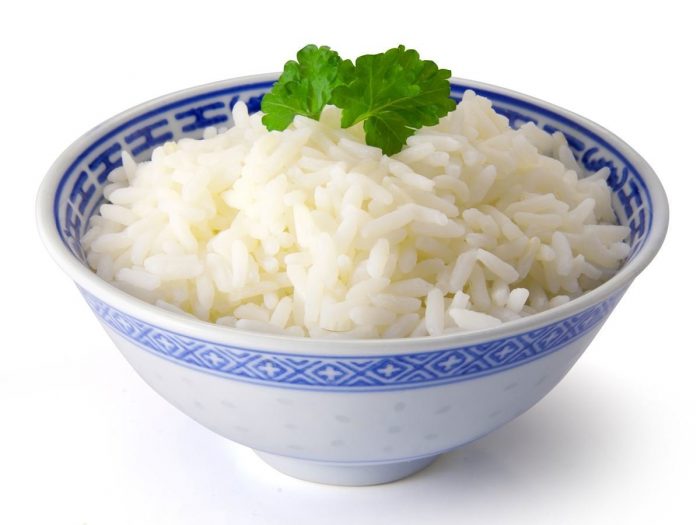Starches and Starch Products
One of the most important and widely available vegetable products, starch constitutes the principal type of reserve food for green plants. It is a complex carbohydrate. It is stored in thin-walled cells in the form of grains. There are several types of starch that differ in the size and shape of the grains and other physical and microscopic characteristics. Important sources of starch are the cereal grains and underground tubers, although nuts, legumes and other plant organs may contain substantial amounts. Besides being a staple food for animals and humans, it also has many industrial applications.
One of the most important and widely available vegetable products, starch constitutes the principal type of reserve food for green plants. It is a complex carbohydrate. It is stored in thin-walled cells in the form of grains. There are several types of starch that differ in the size and shape of the grains and other physical and microscopic characteristics. Important sources of starch are the cereal grains and underground tubers, although nuts, legumes and other plant organs may contain substantial amounts. Besides being a staple food for animals and humans, it also has many industrial applications.
Soluble starch is a form that is used in the textile industry to strengthen the fibers and cement the loose ends thus making a thread that is smoother and easier to weave. It also gives a finish to the end product. It serves as a mordant in calico printing, a thickener for the colors. Starch is also used as a sizing agent in paper industry, in laundry work, in medicine, in the preparation of toilet powders, as a binding for china clay and as a source of many other products.
Sources of Commercial Starch
Relatively few plants are used for the commercial production of starch. The main ones are potato, maize, wheat, rice, cassava, arrowroot and sago.
Cornstarch
Maize or Indian corn is the source of over 80 percent of the starch that is made in the United States. The grains are soaked in warm water with a small amount of sulfurous acid to loosen the intercellular tissue and prevent fermentation. Then the corn is ground so as not to injure the embryos. The ground material is placed in germ separators where the embryos are removed. The starch material is then ground very fine and is either passed through sieves of bolting cloth or is washed in perforated cylinders to remove the bran. The resulting milky liquid is run onto slightly inclined tables where the starch grains settle out and the remaining material flows off. The starch is later collected and dried in kilns and is then ready for the market. The best grades of cornstarch are used for food while inferior grades are for laundry starch and sizing and as a basis for glucose.
Potato Starch
Cull potatoes are utilized for making starch. These are washed and reduced to a pulp in graters or rasping machines. The resulting paste is passed through sieves to remove fibrous matter. After washing the solid starch is separated by sedimentation, the use of inclined tables, or centrifuging, and is then dried. Potato starch finds uses in the textile industry and as a source of glucose, dextrin and industrial alcohol. Europe is the principal producer.
Wheat Starch
The oldest commercial sources of starch were from wheat. It was known to the Greeks and was widely used in Europe in the 16th Century in connection with the linen industry. The gluten in wheat makes the removal of the starch a difficult process. It is accomplished by extraction with water or by the partial fermentation of the grain. Wheat starch is used mostly in the textile industry.
Rice Starch
Rice grains that are broken or imperfect are used for making rice starch. These are softened by treating with caustic soda and are then washed, ground and passed through fine sieves. More alkali is added and after a time the starch settles out as a sediment. This is removed, washed and dried. Occasionally dilute hydrochloric acid is used to free the grains. Rice starch has found use in laundry and for sizing.
Cassava Starch
Cassava Starch flour and tapioca are used in industry mainly as sizing materials and as the source of certain starch products.
Arrowroot Starch
The tubers of several tropical plants provide a source for arrowroot starch. West Indian arrowroot is from Maranta arundinacea. Florida arrowroot is from Zamia floridana. Queensland arrowroot is from Canna edulis, and East Indian arrowroot from Curcuma angustifolia. The tubers of these plants are peeled, washed and crushed and the pulp passed through perforated cylinders. A stream of water carries the starch into tanks where it settles out. Arrowroot starch is easily digested and thus is valuable as a food for children and invalids. There is little use in industry.
Sago Starch
The stems of the sago palm, Metoxylon sagu, contain starch. Cultivation is in Malaya and Indonesia. The flowers appear when the trees are about 15 years old and just prior to this time the stems store up a large amount of starch. The trees are felled and the starch pith is removed. This is ground up, mixed with water and strained through a coarse sieve. The starch is freed from the water by sedimentation and washed and dried. This is known as sago flour. Commercial sago is prepared from this by making a paste and rubbing it through a sieve in order to cause granulation. The product is dried in the sun or in ovens and appears as hard shiny grains, known as pearl sago. Both sago starch and pearl sago are used almost entirely for human consumption.
Sources of Commercial Starch
Relatively few plants are used for the commercial production of starch. The main ones are potato, maize, wheat, rice, cassava, arrowroot and sago.
Cornstarch
Maize or Indian corn is the source of over 80 percent of the starch that is made in the United States. The grains are soaked in warm water with a small amount of sulfurous acid to loosen the intercellular tissue and prevent fermentation. Then the corn is ground so as not to injure the embryos. The ground material is placed in germ separators where the embryos are removed. The starch material is then ground very fine and is either passed through sieves of bolting cloth or is washed in perforated cylinders to remove the bran. The resulting milky liquid is run onto slightly inclined tables where the starch grains settle out and the remaining material flows off. The starch is later collected and dried in kilns and is then ready for the market. The best grades of cornstarch are used for food while inferior grades are for laundry starch and sizing and as a basis for glucose.
Potato Starch
Cull potatoes are utilized for making starch. These are washed and reduced to a pulp in graters or rasping machines. The resulting paste is passed through sieves to remove fibrous matter. After washing the solid starch is separated by sedimentation, the use of inclined tables, or centrifuging, and is then dried. Potato starch finds uses in the textile industry and as a source of glucose, dextrin and industrial alcohol. Europe is the principal producer.
Wheat Starch
The oldest commercial sources of starch were from wheat. It was known to the Greeks and was widely used in Europe in the 16th Century in connection with the linen industry. The gluten in wheat makes the removal of the starch a difficult process. It is accomplished by extraction with water or by the partial fermentation of the grain. Wheat starch is used mostly in the textile industry.
Rice Starch
Rice grains that are broken or imperfect are used for making rice starch. These are softened by treating with caustic soda and are then washed, ground and passed through fine sieves. More alkali is added and after a time the starch settles out as a sediment. This is removed, washed and dried. Occasionally dilute hydrochloric acid is used to free the grains. Rice starch has found use in laundry and for sizing.
Cassava Starch
Cassava Starch flour and tapioca are used in industry mainly as sizing materials and as the source of certain starch products.
Arrowroot Starch
The tubers of several tropical plants provide a source for arrowroot starch. West Indian arrowroot is from Maranta arundinacea. Florida arrowroot is from Zamia floridana. Queensland arrowroot is from Canna edulis, and East Indian arrowroot from Curcuma angustifolia. The tubers of these plants are peeled, washed and crushed and the pulp passed through perforated cylinders. A stream of water carries the starch into tanks where it settles out. Arrowroot starch is easily digested and thus is valuable as a food for children and invalids. There is little use in industry.
Sago Starch
The stems of the sago palm, Metoxylon sagu, contain starch. Cultivation is in Malaya and Indonesia. The flowers appear when the trees are about 15 years old and just prior to this time the stems store up a large amount of starch. The trees are felled and the starch pith is removed. This is ground up, mixed with water and strained through a coarse sieve. The starch is freed from the water by sedimentation and washed and dried. This is known as sago flour. Commercial sago is prepared from this by making a paste and rubbing it through a sieve in order to cause granulation. The product is dried in the sun or in ovens and appears as hard shiny grains, known as pearl sago. Both sago starch and pearl sago are used almost entirely for human consumption.
www.faculty.ucr.edu






























